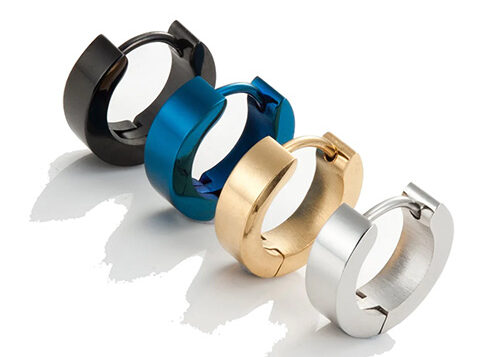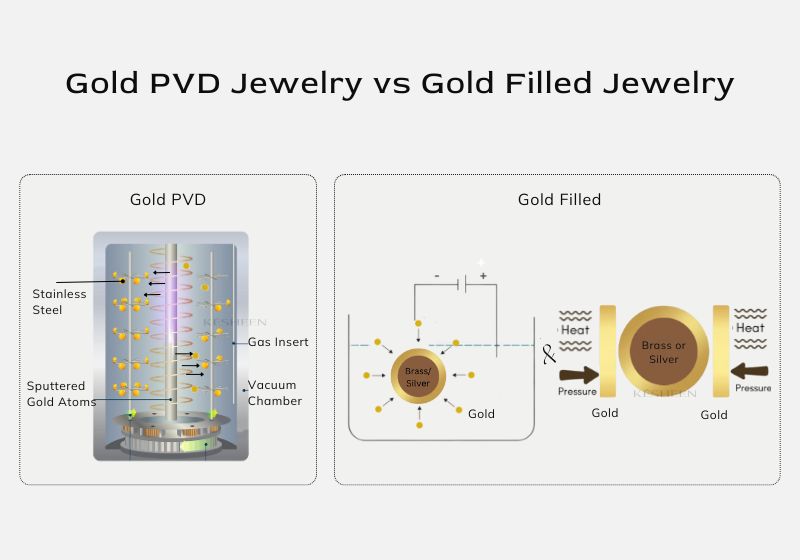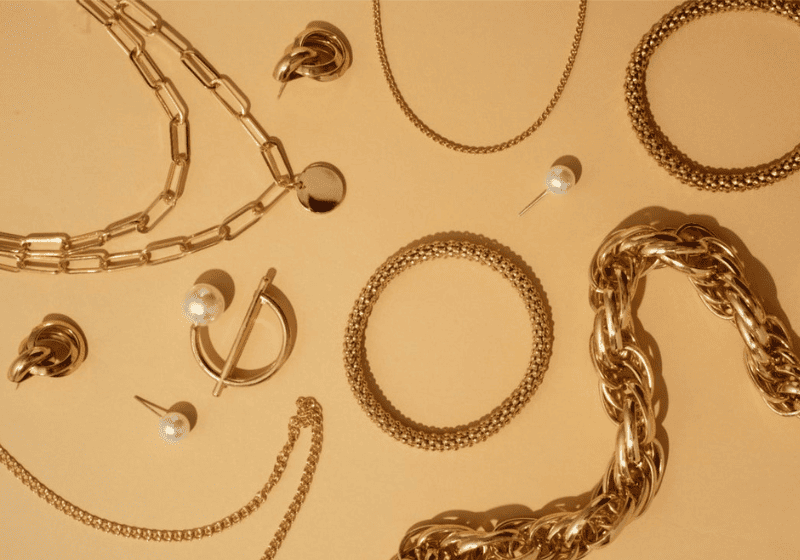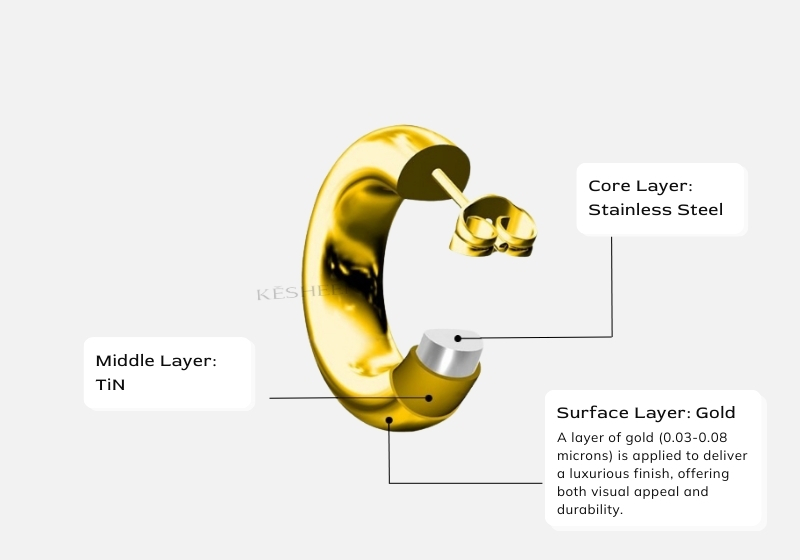PVD (Physical Vapor Deposition) coating has revolutionized the jewelry business by combining cutting-edge technology with breathtaking beauty. From conventional gold to unusual rainbow colors, this creative method makes a great spectrum of vivid and lasting colors possible.
This article will go over PVD coatings’ manufacturing methods, color-achieving procedures, and a spectrum of PVD coating colors in PVD coated jewelry.
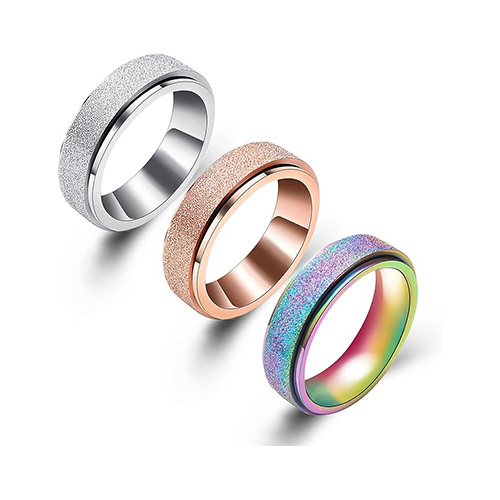
How are PVD Coatings Made?
Using certain stoichiometries, thin films are deposited to produce PVD coating jewelry. With a base metal such as titanium or zirconium, this process starts with a reactive gas forming an ultra-thin ceramic composite. For instance, titanium normally finishes in a silver or gray hue, but adding nitrogen throughout the process creates titanium nitride (TiN), giving it a beautiful gold hue.
How to Achieve Different Jewelry Colors in PVD Plating?
A PVD plating’s diverse jewelry hues are achieved by employing surface treatment and material choice. PVD coatings have the texture of the jewelry substrate, so a textured surface produces a softer, subdued look, while a glossy surface results in a vivid, reflecting finish.
Certain PVD hues, including titanium carbonitride (TiCN), also stay constant independent of film thickness; others, such as oxide-based coatings, are thickness-dependent. Even coating intricate 3D jewelry designs can depend on certain racking methods depending on the uniform color application. By precisely controlling these elements, jewelers can create an amazing array of durable and aesthetically pleasing PVD-coated jewelry.
Jewelry PVD Coating Color Chart
This chart visually demonstrates the range of durable and vibrant PVD colors achievable on jewelry through the PVD coating process, offering options from classic metallic tones to unique, contemporary colors.
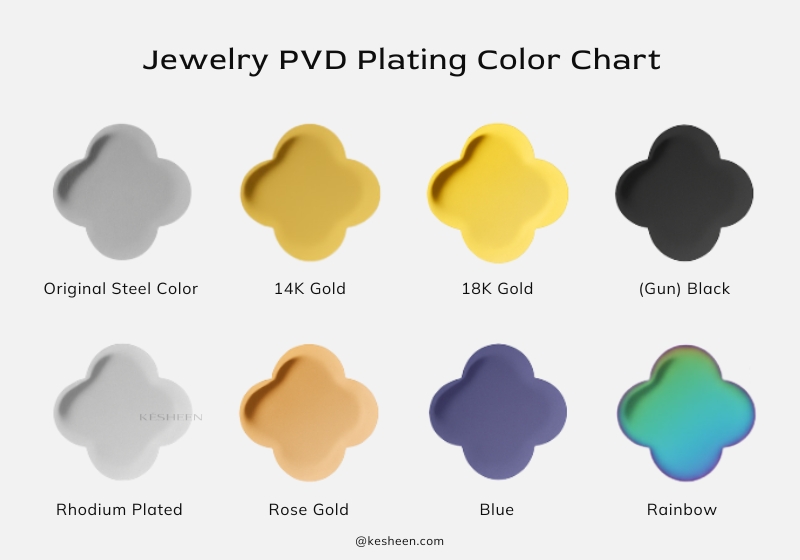
Common Jewelry PVD Coating Colors and Components
PVD coatings provide an amazing spectrum of hues and textures. During the deposition process, each color is attained via certain material and gas combinations that provide strong, lasting coatings that improve both style and utility. The most often used PVD coating colors are below, together with their special ingredients:
PVD Original Steel Color
Polished uncoated stainless steel preserves the base metal’s natural silver-gray tone, enhancing its durability while maintaining a sleek and modern appearance. This finish is ideal for minimalist designs and provides a timeless aesthetic that complements any jewelry style.
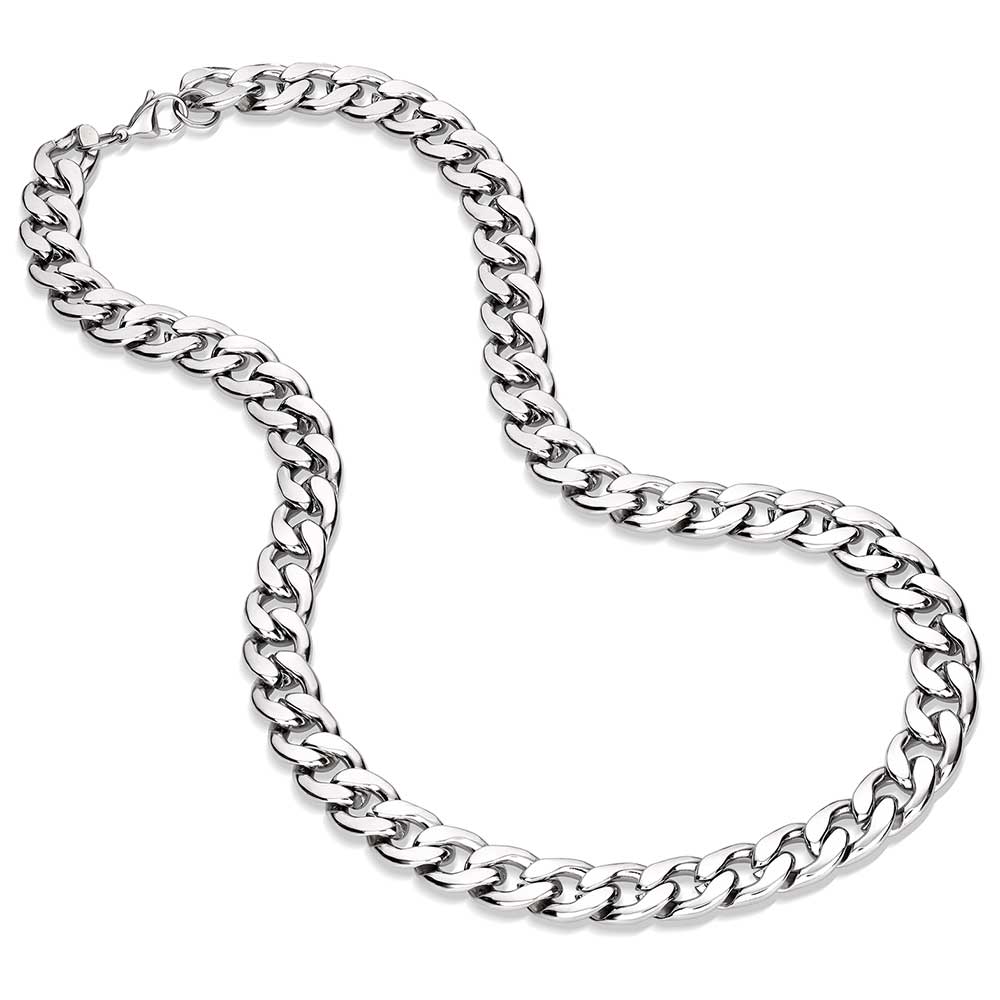
PVD Rhodium Plated
PVD rhodium plating creates a bright, mirror-like finish with excellent scratch and tarnish resistance, often used for an elegant and timeless look mimicing silver products. Its reflective surface is particularly popular for rings and bracelets, offering a premium appearance.
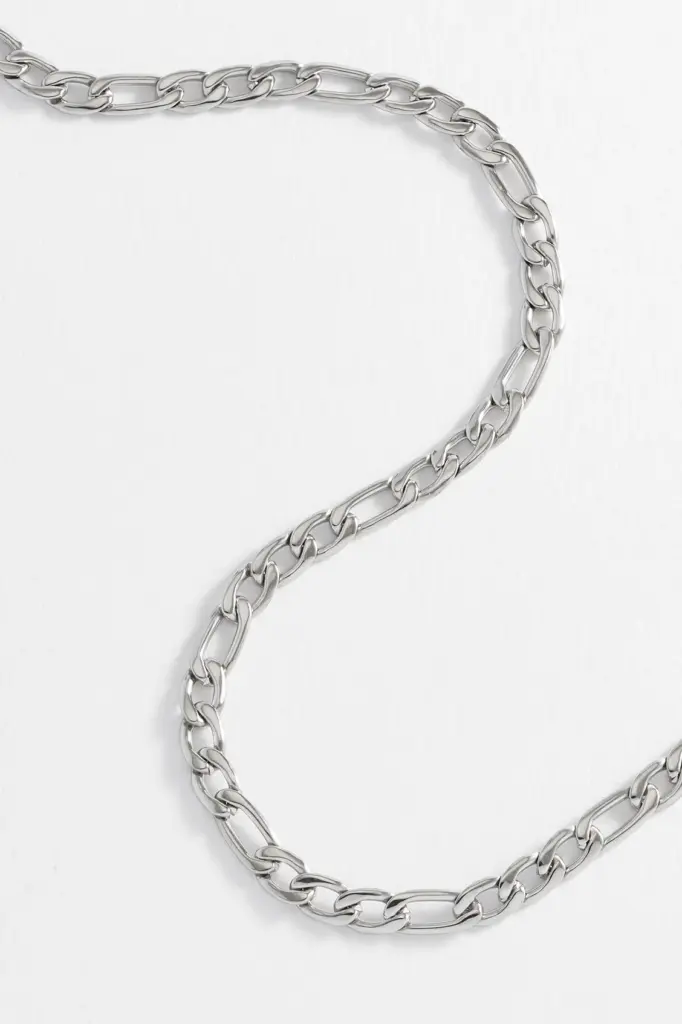
PVD Gold
Achieved through with real gold coatings, gold PVD coatings produce a luxurious, vibrant finish that mimics solid gold with greater durability. This finish is favored for its richness and the added benefit of resistance to fading and tarnishing.
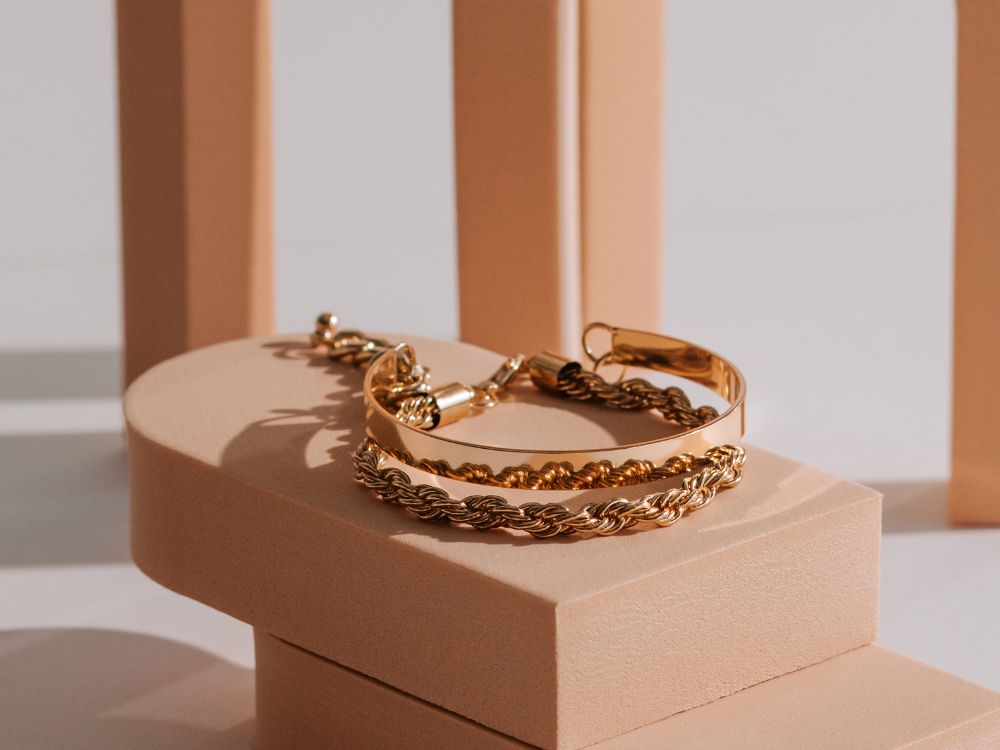
PVD Black & Gun Black
These shades are made by vaporizing titanium, zirconium, or chromium, offering a bold, contemporary look with exceptional wear resistance. Their versatile appearance makes them a top choice for modern and edgy designs.
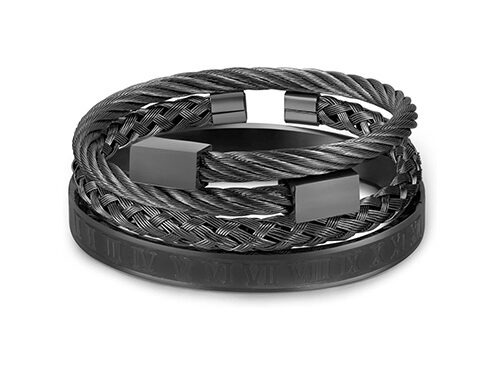
PVD Blue
Blue tones result from precise oxidation processes and thickness control, providing a unique and eye-catching finish for statement pieces. This color can be done with either TiO, CrO, TiALN, which creates varying degrees of blue coloring for that incredible color.
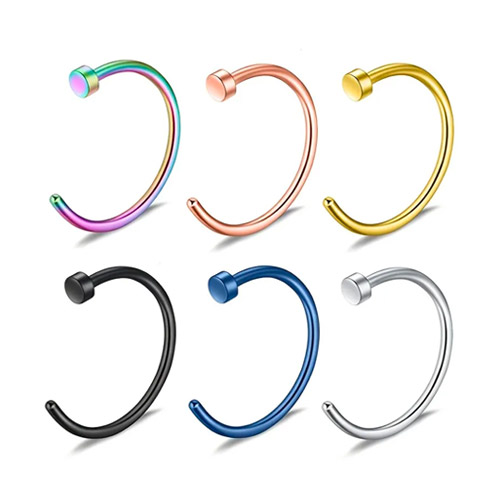
PVD Purple
Purple hues are created through specialized material combinations (chromium Nitride (CrN)) and thickness adjustments, offering a distinctive, regal appearance. In addition to appearance, the coating provides the jewelry with resistance against corrosion and friction.
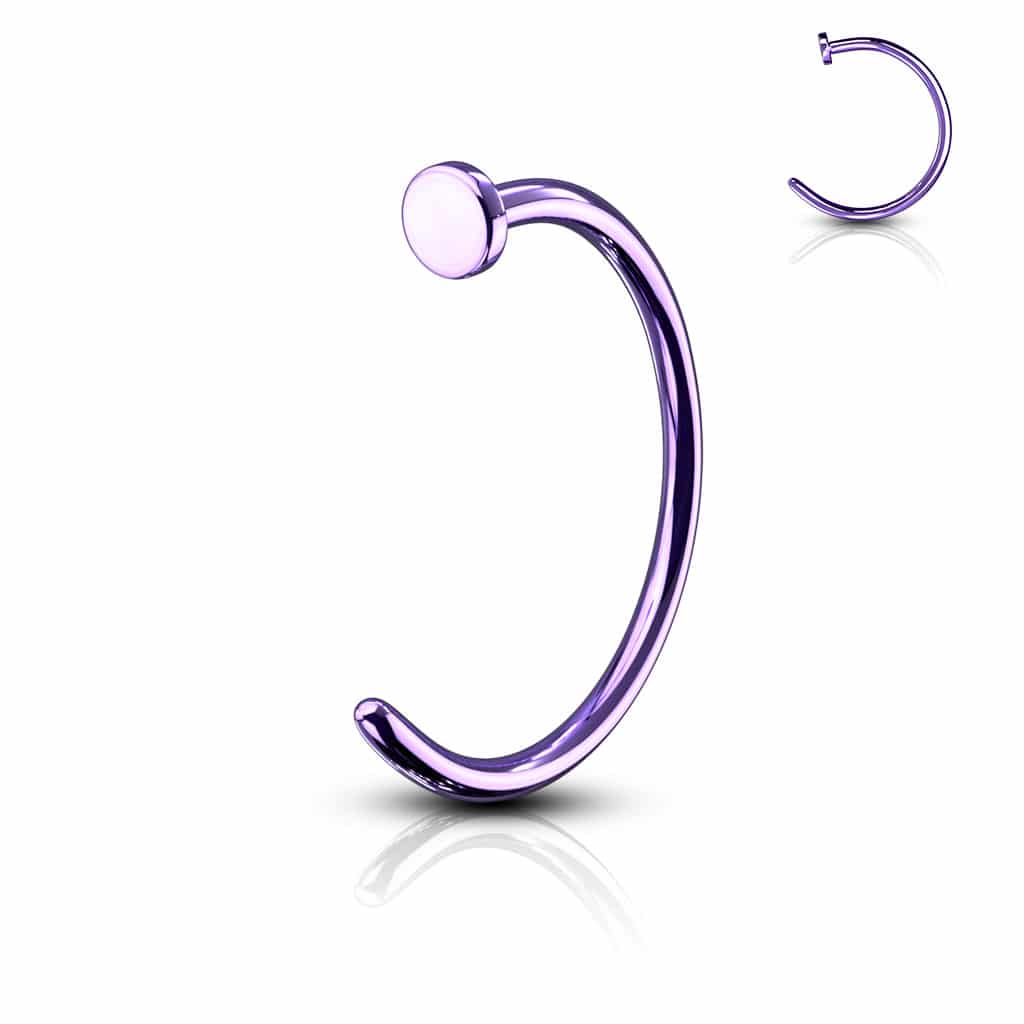
PVD Rainbow
PVD rainbow coating finishes are achieved by layering multiple materials and adjusting the deposition angles, resulting in a colorful, chromatic effect that stands out in any jewelry collection. This vibrant finish is a popular choice for statement pieces and adds a playful touch to any ensemble.
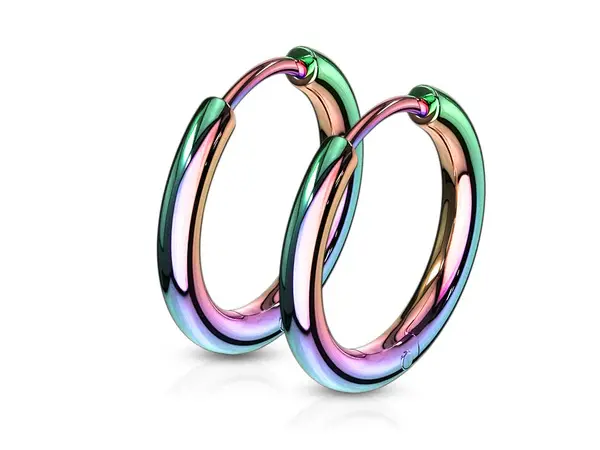
Most Popular PVD Coating Color for Jewelry and Styles
Because of their classic appeal and adaptability in jewelry design, several PVD coating hues have become very well-known. Of them, original steel hue, gold, black, and gray stand out as the most sought-after finishes. Let’s go through the two popular PVD coating colors you can expect from a reliable gold and stainless steel jewelry manufacturer.
Original Steel Color & PVD Gold
The original steel tone offers a sleek, modern look for simple jewelry creations. Its modest and adaptable silver-gray tone complements both business and leisure wear. Conversely, gold PVD coatings give any jewelry piece elegance and warmth. PVD gold jewelry and original steel colors appeal to people who appreciate sophistication and timeless elegance. These two finishes are masterpieces in the jewelry scene.
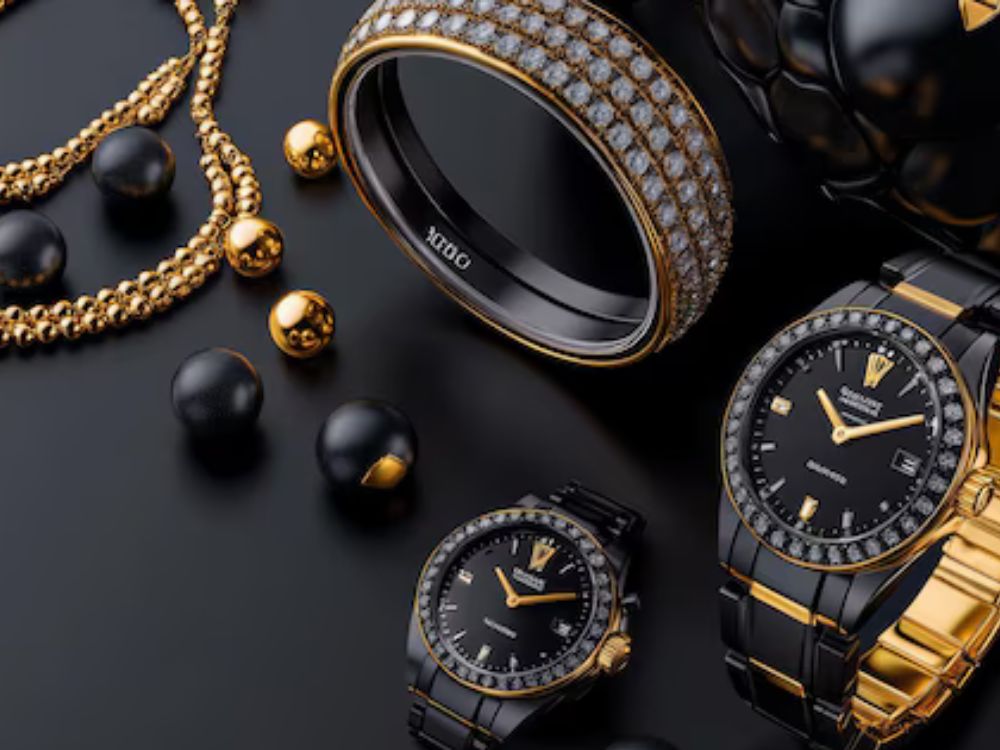
PVD Black
Black PVD coating would be perfect for modern jewelry designs, providing a strong and modern look. Often seen in statement rings, bracelets, and watches, black coatings radiate an edgy and dramatic quality. For individuals who want subdued elegance, grey finishes, with their gentler tone, provide a streamlined and adaptable substitute. Both hues are quite popular for men’s and unisex jewelry as they exhibit their versatility and stylistic appeal.
Conclusion
Jewelry PVD plating allows jewelers to grow their collections with robust, vivid, and adaptable items that fit a range of consumer tastes. From traditional gold to contemporary black and even rainbow colors, the great spectrum of PVD coating colors lets creative ideas stand out in a crowded market.
By including PVD-plated jewelry within their lines of business, jewelers can provide premium, long-lasting choices that appeal to consumers looking for both design and durability.
